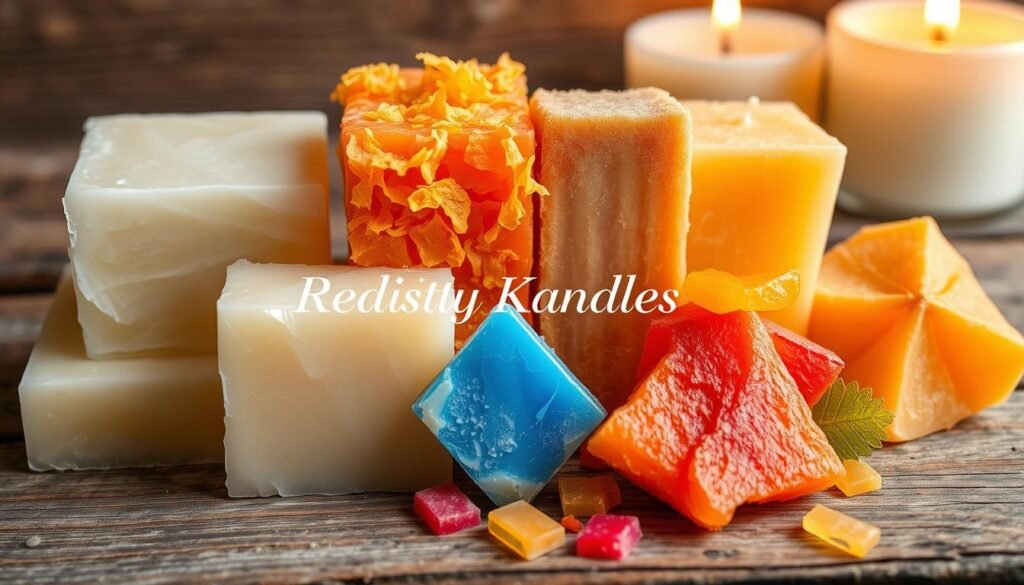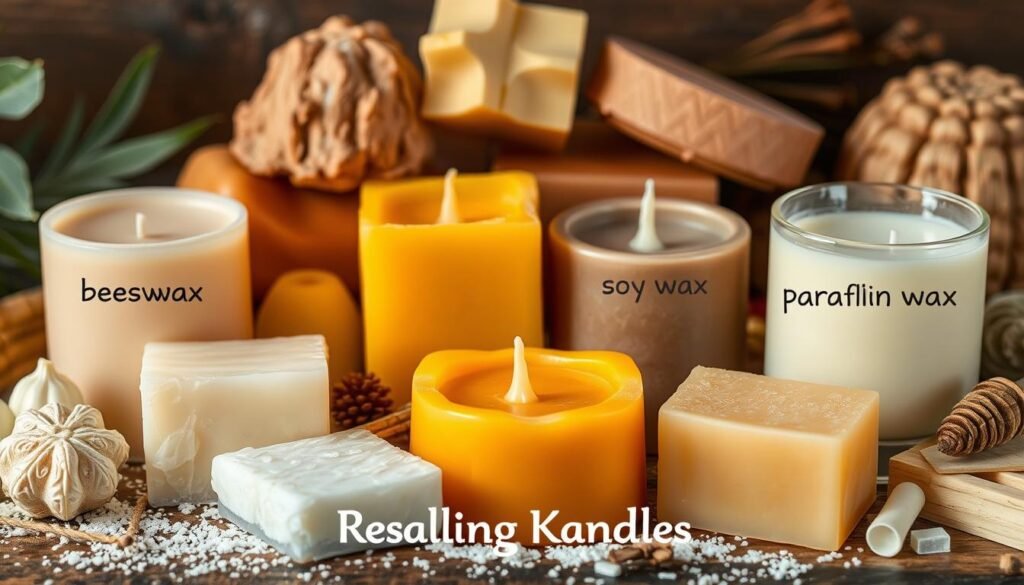Have you ever been drawn to the soft glow of a candle in a dim room? I felt a surge of pride when I lit my first homemade candle. It wasn’t just the scent that filled the air, but the sense of achievement too. Making candles has become a special hobby for me, adding personal touches to my home.
It brings joy and peace to my space. If you want to try this hobby, you’re in the right spot. I’ll show you the key candle making techniques to make candles that show off your style.
We’ll cover everything from getting the right supplies to choosing wax and fragrances. This guide is for anyone starting DIY candle projects or looking to improve their skills. You’ll learn to make candles that are not just beautiful but also meaningful. Let’s start our journey into the world of homemade candles!
Key Takeaways
- Understanding different types of wax is crucial for achieving desired candle characteristics.
- Choosing the right wick type, such as CD 18, enhances burn quality and safety.
- Fragrance blending can elevate the sensory experience of your candles.
- Color selection adds a beautiful aesthetic to your homemade candles.
- Allowing candles to cure for about two weeks ensures optimal fragrance release.
Introduction to Candle Making
Candle making has a long history of candle making that goes back thousands of years. At first, people made candles just for light. Now, it’s a fun and rewarding creative hobby. It’s not just about making candles; it’s about the joy and sense of achievement it brings.
Exploring this craft, I find joy in making candles that are both beautiful and personal. They can be lovely home decor or special gifts. Each candle is a reflection of the maker’s personality and style. It’s amazing how much creativity you can bring into candle making, from wax types to scents and colors.
To start making candles, you need basic supplies like wax, wicks, and scent oils. There are three main types of wax: Paraffin, Beeswax, and Soy wax. Each has its own special qualities. Learning about these materials is key to enjoying the benefits of candle making and improving your skills. It’s a great hobby for anyone who loves to be creative.
Essential Candle Making Supplies
Before you start making candles, you need the right essential supplies for candles. You’ll need different candle wax types. Paraffin, soy, and beeswax are popular. Each has its own benefits.
Paraffin wax is common and holds fragrance well. Soy wax burns cleaner and lasts longer. Beeswax has a natural scent and burns cleaner than the others.
Choosing the right candle wicks is also key. You can pick from cotton or wooden wicks. Cotton wicks are reliable, while wooden wicks crackle and look unique.
For making candles, you’ll need tools like a thermometer and double boiler. A thermometer helps you keep the wax at the right temperature. You can also add dye for color and fragrance oils for scent.
Making candles yourself can save money. If you plan to sell candles, you’ll need more wax and supplies. Scented candles are very popular, with over 75 percent sold in the U.S.

| Candle Wax Type | Burn Quality | Common Uses |
|---|---|---|
| Paraffin | Great fragrance retention | Container and pillar candles |
| Soy | Cleans burn | Container and jar candles |
| Beeswax | Long clean burn | Luxury candles, natural scents |
| Wood Wicks | Unique crackling sound | Container candles for ambiance |
| Blended Waxes | Optimized for fragrance throw | Various candle types |
With the right essential supplies for candles, making candles can be fun. Try different waxes and wicks. Aim for 8 to 12 percent fragrance for the best scent. Learn more about candle-making supplies to make your experience rewarding and creative.
Candle Making Techniques
Learning about candle making is key for making beautiful candles. It includes knowing about wax types, wick selection, fragrance oils, and coloring. Each part is important for a good candle-making experience.
Understanding Different Types of Wax
There are over 60 wax types used in candle making. Paraffin wax is cheap but might be harmful. Soy wax burns clean and is easy to use. Beeswax smells great and is natural.
Knowing about these waxes helps make candles that burn well and look good.
Choosing the Right Wicks
Choosing the right wick is crucial for quality candles. The right wick burns evenly and smells good. Cotton wicks last long outdoors, and wooden wicks add ambiance.
The wick size must match the candle and wax. This keeps the flame steady and burns well.
Exploring Candles’ Fragrance Blending
Using the right amount of fragrance oils is important. The usual ratio is 6-10% per pound of wax. Mixing different oils creates unique scents.
Let the candles sit for 24-48 hours before lighting. This ensures the best smell and performance.
The Importance of Candle Coloring
Coloring candles adds creativity. But, it must be done carefully to keep quality. Trying different colors can make beautiful candles.
Keep the room at 70-72°F while making candles. This helps get the best texture and quality.

| Type of Wax | Burn Characteristics | Common Uses |
|---|---|---|
| Paraffin | Adequate scent throw, potential carcinogens | Scented and unscented candles |
| Soy | Clean burn, longer-lasting | Container and jar candles |
| Beeswax | Natural aroma, unique texture | Natural candles, decorative pieces |
If you’re interested in aromatherapy, check out this guide. It can help improve your candle-making skills.
Step-by-Step Guide to Making Candles
Starting to make candles is fun and lets you be creative. First, I get everything ready. This includes my containers and supplies like wax, wicks, and fragrance oils. This step helps make the process smooth and fun.
Prep Containers and Gather Supplies
After getting all my stuff, I pick out my containers. I like to use old jars or things I find at thrift stores. This makes my project good for the planet. Then, I measure out my wax. I use one ounce of fragrance oil for every pound of wax.
I mix different oils for a nice smell. Lavender and peppermint are favorites because they smell so good.
Measuring and Melting Wax
Next, I melt the wax using special techniques. I use a double boiler to avoid overheating. I watch the temperature closely until it hits 140 degrees Fahrenheit.
This takes about 10 to 15 minutes. Being patient here helps avoid texture problems when pouring candles.
Pouring Techniques for Success
Finally, I pour the wax carefully. This helps avoid air bubbles and makes the surface even. After pouring, I let the candles set at room temperature for about four hours.
By following these steps, I get great results. My candles show off my personal style. For more tips, check out this article on making candles at home or learn about choosing the perfect wick for beautiful candle burning.
FAQ
What are the best types of wax for making candles?
How do I choose the right wick for my candle?
What is fragrance blending, and how do I achieve it?
Can I add color to my candles, and how do I do it?
What is the safest way to melt wax?
How can I ensure a smooth pouring process for my candles?
Source Links
- The Ultimate Guide to Candle Making – Brilliant Scents
- Beginner Candle Making with Soy Wax | Easy-to-Follow Steps
- How to Make Candles
- How To Make Candles: 10 Simple Steps For Beginners (2024) – Shopify
- The Ultimate Guide To Candle Making Supplies (For Beginners)
- DIY Candle Making: Quick Start Guide to Make Candles at Home
- Candle Making Supplies Store – Soap Supplies – Fragrances – Candlewic
- 15 Candle Making Tips and Tricks (For Beginners)
- Top 10 Candle Tips and Tricks for Making Candles
- How to Make Candles: A Step-by-Step Guide
- How to Make Candles in 8 Easy Steps
- Candle Making 101: Best How-to Guide for Beginners in 2024


